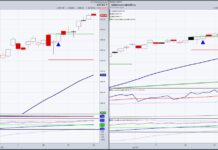 By Jeff Wilson After writing some lengthy multi part articles, I’ve decided to make this next post to be a lot shorter. Nevertheless, I will try to make it relevant to the current financial market environment we find ourselves in and take a look at how and why investors buy put options for protection.
By Jeff Wilson After writing some lengthy multi part articles, I’ve decided to make this next post to be a lot shorter. Nevertheless, I will try to make it relevant to the current financial market environment we find ourselves in and take a look at how and why investors buy put options for protection.
If you own a car, you most likely pay for insurance coverage. If you are a homeowner, you probably have taken out at least a homeowner’s insurance coverage while some probably have additional property insurance such as flood, earthquake, etc. I bet some purchase travel insurance when they travel overseas. Aside from basic legal requirements for purchasing insurance coverage, a major motivation for insurance purchase is the idea of “just in case” meaning while no rational home or car owner expects or wishes for damage/accidents to his or her investment or property, it feels good to know that in the worst of times, the insurance coverage can kick in. As the saying goes, “Hope for the best, expect the worst.” So my question is, why shouldn’t any active and responsible investor of stocks or ETFs purchase insurance coverage for their asset?
If you were fortunate enough to have saw 2009 as a generational market bottom and accumulated stocks then or bought and/or added during major market corrections between then and current levels, you are most likely up big on your positions. And furthermore, now that we have returned to 2007 pre-crash levels and many stocks have made all-time highs, I’m sure one of the questions many are asking is: Well does the market make new highs, consolidate for a long time or just do a U turn and experience a major correction 10-20% before moving up again?
One way to not have to worry about this is to buy “insurance protection” in the form put options; this is also known as put protection. Note that fellow SIM contributor Brad Tompkins wrote about it here: Options Basics: Trading a Put. Unless you buy the put options contract leading up into a binary event (earnings, FDA, etc), with a low VIX environment, chances are put protection that goes out at least 6 months from now should be relatively cheap (in volatility terms).
Let’s take PFE- Pfizer for example. Let’s say you started to buy in 2009 and added along the way up. With the dividend you’ve collected, you net cost of entry is 16.00. It’s trading a little over 27 yet its all time high is north of 45. You don’t want to give up the stock since it still yields 3.5%. However, you are cognizant of the fact that anything can happen where it can experience a major haircut. The prudent thing to do is take some off and reduce risk. If this isn’t an option, one can look out all the way to the Jan 2015 contracts and purchase the 25 put options for 2.55. Yes it’s about 10% of the current strike price. However, assuming the current dividend amount of .24 is maintained, total dividend paid out by then should be at least 1.68(.24 times 7 more distributions until then). This means that total outlay is about .87 per share. So for protection against a just in case scenario, you are paying less than 1.00 to ensure that no matter what happens, your investment in PFE is protected below a stock price of 25. Of course just like any insurance premium, it’s a sunk cost should a claim not be made. However, you bought yourself a safety net for about 22 months and your upside is unlimited.
There are other methods that can be utilized separately or in conjunction with put options protection but I promised to keep this short and sweet. If interested, just comment below and I can write more about it in the future.
Twitter: @cerebraltrades and @seeitmarket
No position in any of the securities mentioned at the time of publication.
Any opinions expressed herein are solely those of the author, and do not in any way represent the views or opinions of any other person or entity.








